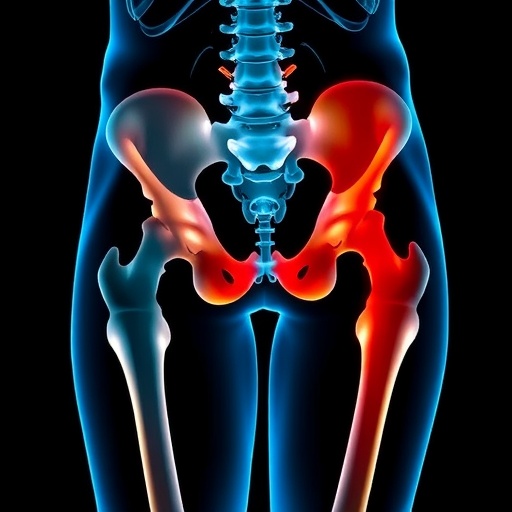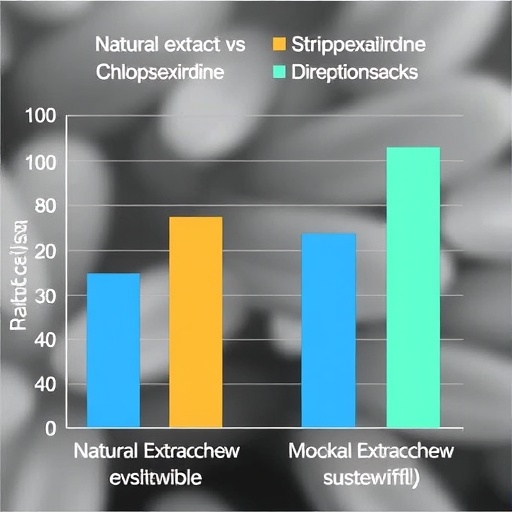In recent years, the field of orthopedic surgery has witnessed significant advancements, particularly in procedures addressing age-related musculoskeletal disorders. One such development is the novel no hip extension method during bipolar hip hemiarthroplasty, meticulously evaluated by Yang, Wang, and Zhong in their groundbreaking study. This innovative approach, emerging from the direct anterior surgical technique, offers myriad benefits for older patients suffering from geriatric displaced femoral neck fractures, a common yet serious condition that can severely impact mobility and quality of life.
The traditional approach to hip replacement surgeries often involves substantial displacement and extension of the hip joint, which can lead to postoperative complications and extended recovery times. However, the introduction of a no hip extension method could radically transform the surgical landscape. By mitigating the need for extensive manipulation of the hip joint, this technique potentially decreases the risk of soft tissue damage and improves immediate postoperative recovery for geriatric patients.
The research conducted by Yang and colleagues meticulously examines various metrics linked to the no hip extension method. Through comprehensive clinical trials, the authors assess complications, recovery speed, and overall patient satisfaction. Their results indicate a striking reduction in postoperative pain and dissatisfaction, showcasing the considerable advantages this method might provide to the aging population suffering from hip fractures. Post-operative discomfort has consistently been a guideline for the efficacy of surgical techniques, and this new approach seems to answer the call effectively.
Patients aged over 65 bear the brunt of hip-related injuries. Geriatric displaced femoral neck fractures are not just common; they are becoming a pressing public health concern as populations age globally. Effective surgical strategies become imperative, particularly those that enhance recovery while ensuring a low complication rate. Yang, Wang, and Zhong’s study shines a light on addressing these issues with their no hip extension technique, which strives to amend a common problem that has long plagued this demographic.
The study further emphasizes the direct anterior approach as a suitable alternative to conventional methods. By adopting this innovative technique, surgeons can access the hip joint with less exposure of surrounding soft tissues, significantly reducing the trauma often associated with traditional hip surgeries. This less invasive approach involves careful incision planning and precise structuring of the surgery to ensure optimal access without the need for extreme manipulation.
Moreover, the impact of this surgical approach on rehabilitation cannot be understated. With reduced disruption to the delicate structures surrounding the hip, patients might experience a quicker return to baseline activities. This return is pivotal, as regaining mobility can greatly influence overall health outcomes in seniors. The ability to minimize the recovery period while enhancing satisfaction and reducing pain is a crucial end goal of any surgical intervention.
Yang and colleagues also provide insights into the potential for improved long-term outcomes associated with their method. While the immediate postoperative period garners significant attention, the long-term implications of surgical choices must not be overlooked. The recurrence of complications, functional limitations, and overall quality of life are essential factors to consider in the elderly population, and early indications suggest that the no hip extension method could lead to better quality indicators in these areas.
Of particular note is the thorough methodology employed throughout the study. The researchers utilized a significant sample size while maintaining rigorous criteria to ensure comprehensive results. Their attention to detail speaks to the reliability of the findings presented and provides a robust platform for further research into this promising surgical method. As evidence mounts regarding its efficacy, the potential for wider adoption by orthopedic surgeons becomes increasingly plausible.
While the study heralds positive outcomes, it is crucial to address the necessary prerequisites for practitioner adoption. Surgeons must undergo training to facilitate proficient execution of the no hip extension technique, particularly within the context of the direct anterior approach. As with any surgical technique, careful training minimizes risks and ensures high-quality care for patients. Furthermore, collaboration with experienced professionals during the initial phase will undoubtedly smoothen the transition into this innovative approach.
In conclusion, Yang, Wang, and Zhong’s research on the novel no hip extension method for bipolar hip hemiarthroplasty presents a significant stride towards improving surgical outcomes in geriatric patients experiencing displaced femoral neck fractures. By prioritizing less invasive techniques that respect the anatomical integrity of the hip joint, this method not only promises to enhance patient experiences but also pushes the boundaries of what is achievable in orthopedic surgery today. As further studies validate these findings, healthcare professionals are compelled to consider shifting the standard surgical practices in favor of this innovative approach to better serve the aging population.
As we look toward the future, it is evident that the orthopedic community must remain open to innovations that embody both efficacy and compassion in care. The no hip extension method exemplifies the progress being made and instills hope for better surgical options that prioritize patient well-being in an era of rapidly evolving medical technology.
Subject of Research: Hip replacement surgery techniques in geriatric patients.
Article Title: A novel no hip extension method during bipolar hip hemiarthroplasty using direct anterior approach for treatment of geriatric displaced femoral neck fracture.
Article References:
Yang, F., Wang, Jj., Zhong, Hh. et al. A novel no hip extension method during bipolar hip hemiarthroplasty using direct anterior approach for treatment of geriatric displaced femoral neck fracture.
BMC Geriatr 25, 783 (2025). https://doi.org/10.1186/s12877-025-06474-8
Image Credits: AI Generated
DOI: 10.1186/s12877-025-06474-8
Keywords: Bipolar hip hemiarthroplasty, direct anterior approach, geriatric patients, hip replacement surgery, femoral neck fracture, orthopedic surgery, surgical techniques.
Tags: anterior approach hip surgerybipolar hip hemiarthroplastyclinical trials in orthopedic surgerygeriatric hip fractureship replacement complicationsinnovative surgical techniquesmusculoskeletal disorders in elderlyno hip extension techniqueorthopedic surgery advancementspatient satisfaction in surgerypostoperative recovery in geriatricssoft tissue damage prevention






